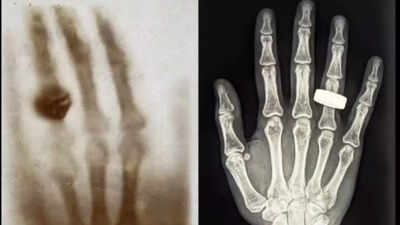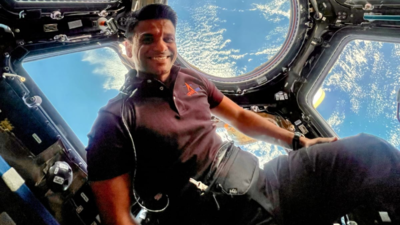SpaceX’s Fram2 mission achieves first-ever human X-Ray in space orbit |

In 1895, a German professor of physics named Wilhelm Röntgen was experimenting with cathode rays when he stumbled upon an accidental discovery that would transform the field of medical science. While carrying out experiments, he noticed a strange glow in a fluorescent screen in his laboratory. This resulted in the identification of a new type of radiation, which he dubbed “X-rays” because of their unknown character. Recognising the medical uses of this technology, Röntgen quickly took the world’s first X-ray image of the human body. The legendary photograph was that of his wife’s hand, which wore a ring, the start of a new age in diagnostic medicine.
SpaceX Fram2 mission achieves historic X-ray imaging milestone in space
Over 130 years since Röntgen made his breakthrough, the SpaceX Fram2 mission crew reproduced his classic X-ray picture but did so this time, in space. The Fram2 mission launched on March 31, 2025, aboard a spaceship carrying four astronauts on a historic journey. The Fram2 mission was initially intended to undertake the first polar orbit human spaceflight. Supported by Maltese cryptocurrency tycoon Chun Wang, the expedition also involved three of his fellow colleagues who had earlier accompanied him on polar expeditions.
The Fram2 mission took three and a half days, during which 22 research experiments were conducted by the crew. These tests varied from viewing Earth’s poles and carrying out biological research, like cultivating mushrooms, to more scientific pursuits, like making X-ray images of the human body in space. The first X-ray image taken by the crew was of a hand, similar to Röntgen’s first image, but this time taken in the special conditions of space. This test was the first time that X-ray imaging had been employed on a human body while in space.
Fram2 crew expands X-ray imaging in space
Having successfully imaged the hand’s X-ray, the crew of Fram2 went on to test the possibilities of this technology further. The crew extended their diagnostic imaging beyond the hand’s X-ray, taking X-rays of other body parts like the forearm, pelvis, abdomen, and chest. The crew also applied the X-ray technology to do diagnostics on their spacecraft’s electronics besides human health imaging, demonstrating the applicability of X-ray imaging in space.
In addition, the crew illustrated the functionality of DXA (Dual-energy X-ray absorptiometry), a type of specialized X-ray imaging that quantifies bone density, as another area of technological accomplishment for the mission.
Fram2 crew returns to Earth for groundbreaking post-flight research
Upon returning from the successful mission, the Fram2 crew’s SpaceX Dragon capsule Resilience landed safely in the Pacific Ocean off Oceanside, California, on April 4, 2025. The astronauts were recovered by SpaceX Dragon recovery ship Shannon and taken to NASA’s Johnson Space Center at Houston. They commenced post-flight studies there in the form of biometric tests and experiments aimed at understanding how microgravity impinges on the human body.
With the pioneering work of the Fram2 mission, the integration of space exploration and medical technology has been taken to unprecedented levels, proving the promise of future studies and applications beyond the planet Earth.
Also Read | What happens to astronauts’ bodies in space? Discover the unexpected side effects of living in space






